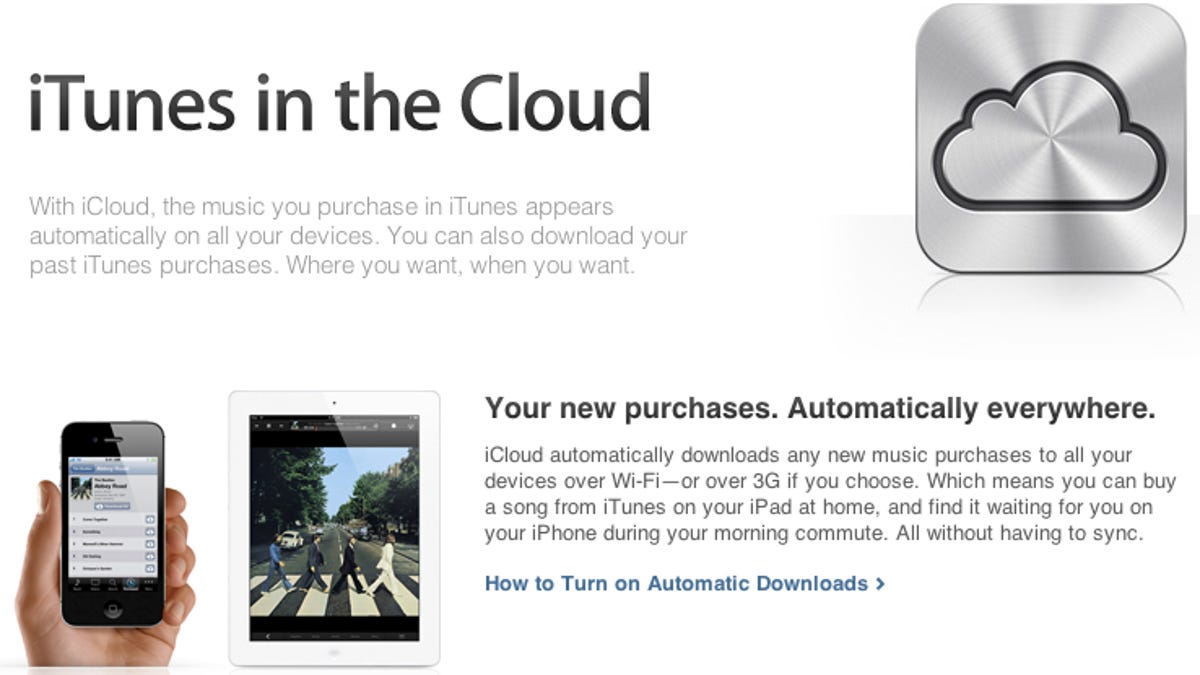Storage talk of 2011: Apple takes control
CNET editor Dong Ngo's take on how Apple manages to rule the world of computer storage in 2011.
Though not a storage vendor, Apple had arguably the biggest influence on consumer-grade storage products during 2011.
And just like the way the company has always been trying to control its products, this influence didn't always turn out to be a good thing for consumers, including Apple fans. Let's take a look at a few major examples of how Apple changed the face of computer storage in 2011.
1. The lack of support for USB 3.0
USB 3.0 was first introduced in late 2008, and by late 2010, most new and high-end Windows computers were equipped with it. Consumers who don't already have it can easily get a add-on PCIe card to upgrade their desktop PC to the new standard. With a top speed of 5Gbps (just 1Gbps shy from the top speed of the SATA 3 standard, and about 10 times that of USB 2.0) and total backward compatibility with USB 2.0, USB 3.0 allows consumers to drastically improve their storage performance without any sacrifices.
To be fair, one of the reasons Apple decided to forgo USB 3.0 was possibly because Intel didn't include this standard in its chipsets during most of the year. Now, though Intel has hinted that USB 3.0 might become standard in its chipsets next year, Apple still hasn't provided any clues if it will follow suit.
This lack of support means that Mac users have been missing out on a standard that's not just fast but also very versatile and affordable. Instead, they will have to bite the bullet and opt for another new I/O standard, which is also the real reason Apple skipped USB 3.0: Thunderbolt.
2. The introduction of Thunderbolt
Initially known as LightPeak, Thunderbolt is a new I/O standard that, for now, offers the top bandwidth of up to 10Gbps. Intel teamed up with Apple to announce Thunderbolt in Februaryand made it available exclusively in Apple's computers. This has still been the case ever since.
Thunderbolt is more than just a storage standard; it can also handle video and carry audio signal, in additional to data. The standard also allows for the ability to daisy chain up to six devices together without bandwidth reduction.
Strictly in terms of storage, however, Thunderbolt is rather overkill. This is because even the fastest internal drive offers a top bandwidth of just 6Gbps (of the SATA 3 standard). This means it doesn't matter how fast your computer is, for now, there's no way you can get the true speed of Thunderbolt in consumer-grade storage applications.
While it doesn't hurt to have a standard that's "too fast," it sure does hurt when you have to pay for it. The first Thunderbolt-based storage solution, the
This gives Mac users a difficult choice of either using slow but affordable legacy USB 2.0 or FireWire devices or biting the bullet to get new Macs that support Thunderbolt and Thunderbolt-enabled devices. Also, Windows users, for now, still miss out on Thunderbolt. Hopefully this will change in 2012, when Intel adds Thunderbolt to the Windows platform.
3. The impact on the solid-state drive market.
Throughout the year, I've wondered why theprices of standard solid-state drives (SSDs) are still so high, compared with those of traditional hard drives. As it turns out, one of the reasons is that there are limited supplies of materials for flash memories. And since most, if not all, mobile devices use solid-state as their main storage, there's only so much left for the standard SSDs.
Apple was by far the largest vendor of tablets and smartphones and, hence, the one that affected the prices of standard SSDs the most, whether that was its intention or not.
4. The release of Lion
Apple launched the latest version of its Mac OS X Lion mid-2011, and among other things, the OS changes the way Time Machine works.
In a nutshell, Lion uses a new version of Netatalk that's not backward compatible with the previous version. Netatalk is a protocol required by Time Machine for it to use a network storage device as the backup destination. This move effectively rendered all third-party NAS servers' existing support for Time Machine useless when used with Lion.
After Lion was launched, NAS vendors such as Synology,LaCie and others scrambled to release updates to reinstate support for Time Machine, a process that took a few months; some still don't support Lion. The only NAS server that wasn't affected during this transition was Apple's
5. The release of iCloud
Cloud storage--a fancy name for an online storage service--and personal cloud was the theme of 2011, starting with CES 2011 when most NAS vendors introduced products that offer personal cloud feature.
During 2011, examples of products with "personal cloud" feature include the
However, it wasn't until Steve Jobs introduced the iCloud in June that online storage became a hot topic. And when the product was finally released, it was tightly integrated into Apple's iOS and also Lion (starting with the 10.7.2 upgrade). This means other cloud storage vendors will have a hard time finding a market within Apple's products. On top of that, iCloud offers users little control over what it does and makes users use more Internet bandwidth than necessary.
The year is now coming to an end with the prospect that Thunderbolt will likely be added to Windows, and other storage vendors' continued investment in other ways offers consumers more options in terms of keeping their data safe and accessible. It'll be interesting to see what Apple's next move is in 2012 to keep its tight control over what consumers can do with its products and services.


